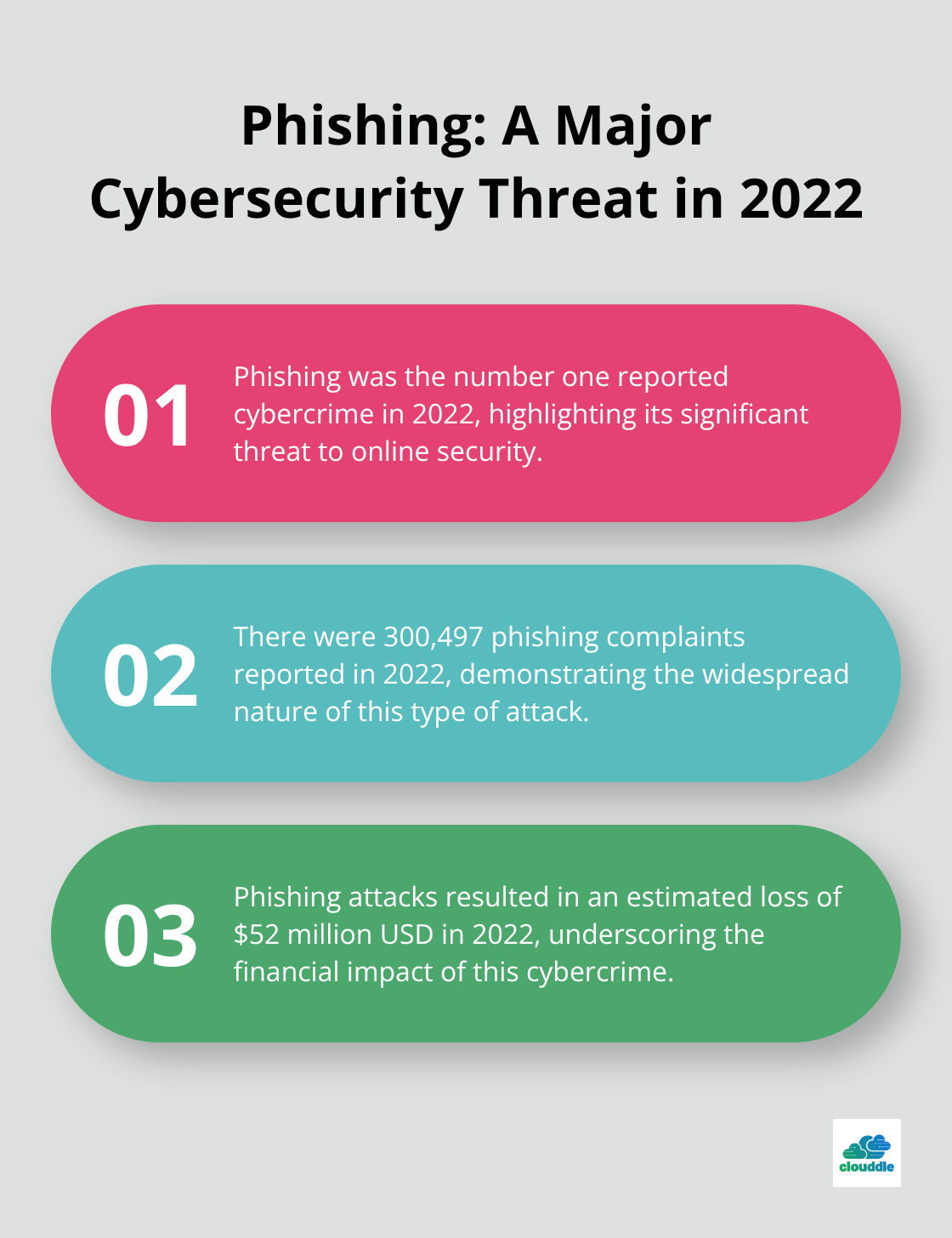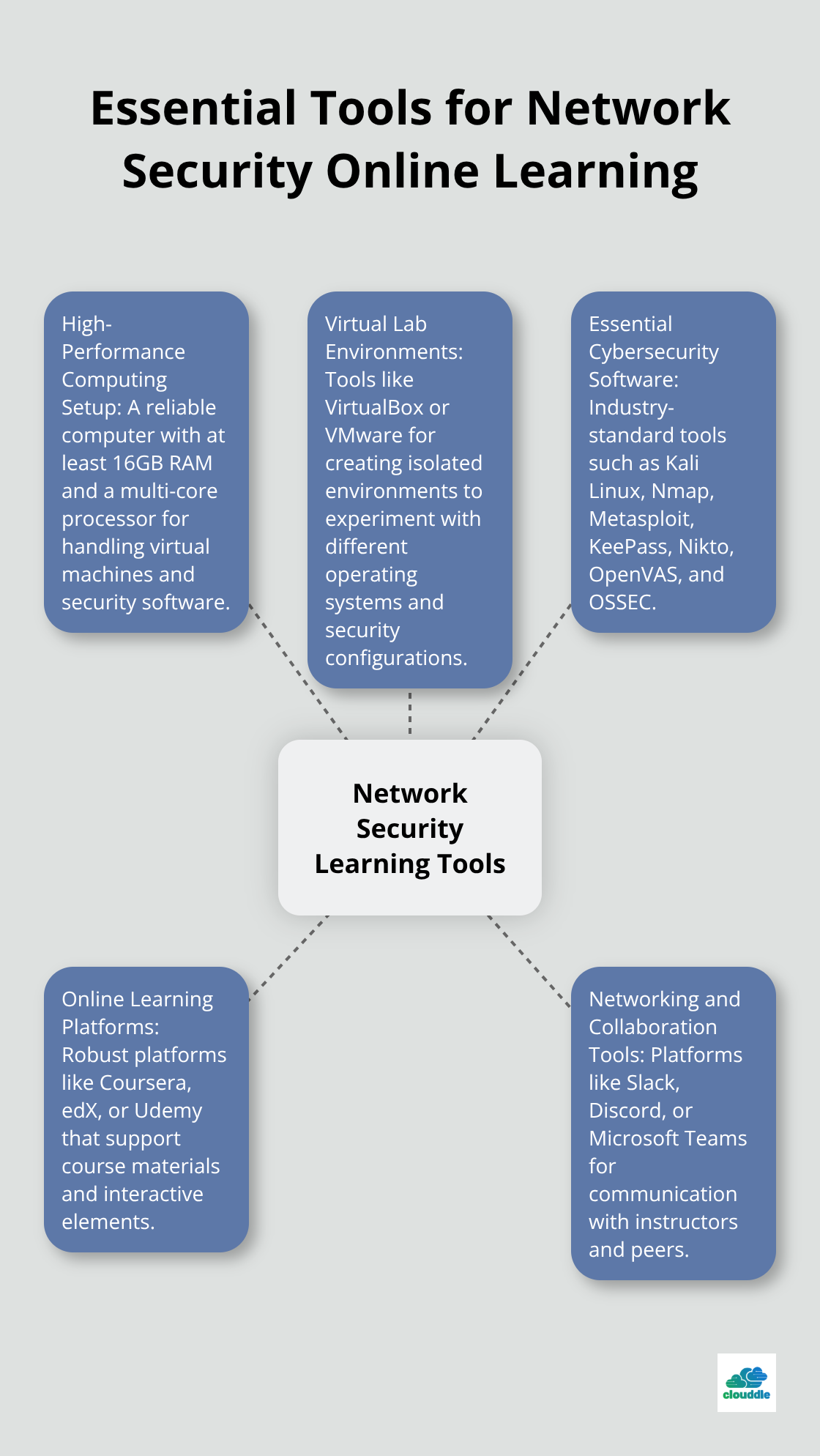Network security is a critical field in today’s digital landscape. At Clouddle, we understand the importance of staying ahead in this ever-evolving domain.
Taking a network security online class can be an excellent way to enhance your skills and knowledge. This guide will help you navigate the process of selecting and excelling in the right course for your needs.
How to Choose the Best Network Security Online Class
Assess the Course Content
The first step in selecting a network security online class involves a thorough examination of the course syllabus. You should look for topics that align with your career goals and current industry trends. A comprehensive network security course must cover areas like firewall configuration, intrusion detection systems, and encryption techniques. According to the IC3, phishing is the number one reported crime, with 300,497 complaints in 2022 and an estimated loss of $52 million USD, which underscores the importance of courses that focus on both technical skills and security awareness.

Verify Instructor Expertise
The quality of instruction can significantly impact your learning experience. You should research the instructor’s background, including their industry experience and academic qualifications. Instructors with real-world cybersecurity experience provide valuable insights beyond textbook knowledge.
Consider Time Commitment
Your schedule and learning pace play crucial roles in course selection. Some courses offer self-paced learning, while others have fixed schedules. You should choose a format that fits your lifestyle to ensure full commitment to the course.
Prioritize Practical Learning
Hands-on experience proves invaluable in network security. You should seek courses that offer virtual labs or simulated environments where you can practice configuring firewalls, detecting intrusions, and responding to cyber incidents. A study from the SANS Institute found that positive reinforcement and reward-based training lead to significantly higher participation and long-term behavior changes in cybersecurity education.
Evaluate Course Reviews and Ratings
Before making your final decision, take time to read reviews and ratings from previous students. These insights can provide valuable information about the course’s strengths and weaknesses. Pay attention to comments about the course’s relevance, the instructor’s teaching style, and the overall learning experience. This step will help you make an informed decision and set realistic expectations for your chosen course.
Now that you understand how to choose the best network security online class, let’s explore the essential tools and resources you’ll need for successful online learning in this field.
Essential Tools for Network Security Online Learning
To excel in your network security online class, you need more than just determination. The right tools and resources can significantly enhance your learning experience and help you apply theoretical knowledge to practical scenarios. Here’s what you should have in your digital toolkit:

High-Performance Computing Setup
A reliable computer with a fast internet connection is essential for online learning. For network security courses, we recommend a system with at least 16GB of RAM and a multi-core processor. This setup will handle virtual machines and security software without lag. A 2024 survey by EdTech Magazine found that 78% of students reported technical issues as their biggest obstacle in online learning. Don’t let your hardware hold you back.
Virtual Lab Environments
Hands-on experience is key in network security. Many courses offer built-in virtual labs, but having your own setup can provide additional practice. Tools like VirtualBox or VMware allow you to create isolated environments for experimenting with different operating systems and security configurations. Virtual labs allow students to practice cybersecurity skills without physically breaking systems.
Essential Cybersecurity Software
You should familiarize yourself with industry-standard tools. Kali Linux, Nmap (for network discovery), and Metasploit (for penetration testing) are must-haves. Many of these tools are open-source, allowing you to practice without financial barriers. Other important tools include KeePass, Nikto, OpenVAS, and OSSEC.
Online Learning Platforms
Choose a robust online learning platform that supports your course materials and interactive elements. Platforms like Coursera, edX, or Udemy often provide integrated tools for video lectures, quizzes, and peer interactions. Some platforms even offer mobile apps, allowing you to study on-the-go (a feature that 65% of online learners find valuable, according to a recent eLearning Industry report).
Networking and Collaboration Tools
Network security is a collaborative field. Try to use tools that facilitate communication with instructors and peers. Slack, Discord, or Microsoft Teams can create virtual study groups and discussion forums. These platforms allow you to share insights, ask questions, and stay connected with your learning community.
Now that you’ve equipped yourself with the necessary tools, let’s explore effective study strategies to maximize your learning in network security online courses.
Mastering Network Security Study Techniques
Create a Structured Learning Environment
Set up a dedicated workspace free from distractions. A 2024 study by the Journal of Online Learning found that students with a designated study area scored 15% higher on assessments. Invest in a comfortable chair, good lighting, and noise-cancelling headphones to create an ideal learning environment.
Develop a consistent study schedule. Allocate specific time blocks for different aspects of your course (lecture viewing, hands-on practice, and review sessions). Stick to this schedule. The National Cyber Security Centre provides expert advice to help protect UK businesses, charities, clubs, and schools with up to 250 employees from cyber threats online.
Engage Actively with Course Material
Don’t passively consume content. Engage with it actively. Use the Cornell note-taking method, which involves dividing your notes into main ideas, details, and a summary section. This technique makes it easy to identify the most essential points of the lecture.
Review and summarize your notes regularly. The forgetting curve, a concept in cognitive psychology, shows that we forget about 70% of what we learn within a day without review. Combat this by summarizing key points after each study session and revisiting them weekly.

Prioritize Hands-On Practice
Theory matters, but practical application is where real learning happens. Dedicate at least 50% of your study time to hands-on exercises. Set up your own home lab using virtual machines to practice configuring firewalls, detecting intrusions, and responding to simulated attacks.
Use platforms like Hack The Box or TryHackMe to challenge yourself with real-world scenarios. These platforms offer a range of difficulty levels, allowing you to progressively build your skills. Try to complete at least one new challenge each week to keep your skills sharp.
Leverage Community Learning
Participate actively in course forums and discussion boards. A study by the Online Learning Consortium found that students who regularly engaged in online discussions performed 20% better on average than those who didn’t.
Form or join study groups with peers. Use tools like Discord or Slack to create virtual study rooms. Set weekly goals and hold each other accountable. Share resources, discuss complex topics, and practice explaining concepts to reinforce your own understanding.
Stay Current with Industry Trends
Subscribe to reputable cybersecurity news sources like Krebs on Security or The Hacker News. Dedicate 30 minutes daily to reading about the latest threats and defense strategies. This habit will supplement your course material and prepare you for real-world scenarios.
Attend virtual conferences and webinars. Many are free and offer insights from industry experts. Try to participate in at least one event per month. These events often provide opportunities to network with professionals and learn about cutting-edge technologies and techniques.
Final Thoughts
A network security online class provides essential knowledge and skills to protect digital assets in our connected world. You should select a course based on content relevance, instructor expertise, and practical components to maximize your learning experience. The right tools, including a robust computer setup and virtual lab environments, will enhance your ability to apply theoretical concepts to real-world scenarios.
Effective study habits form the foundation of success in online learning environments. You must create a structured schedule, engage actively with course materials, and prioritize hands-on practice to maximize your learning potential. Network security requires more than memorization; it demands a mindset that adapts to evolving threats.
The field of network security constantly evolves, presenting new challenges. Your learning journey extends beyond course completion. We at Clouddle offer advanced technology solutions that integrate networking, security, and managed IT services (allowing businesses to focus on growth while we manage network security complexities). As you begin your network security online class, each lesson brings you closer to becoming a skilled professional in this vital field.


